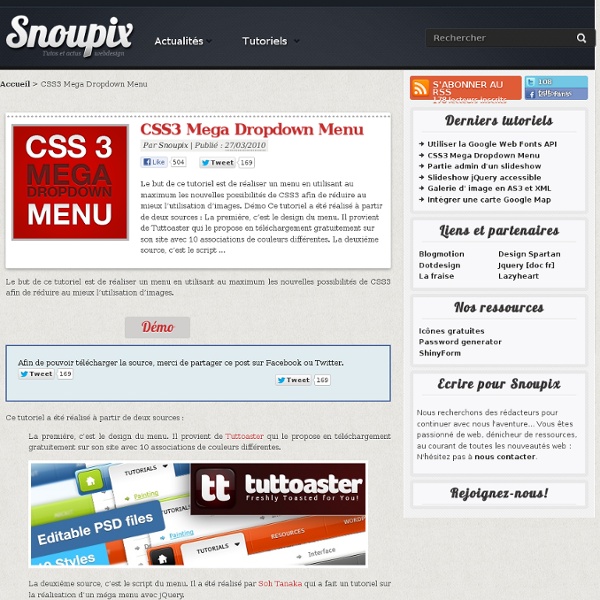



CSS3 Web Design Examples for Your Inspiration The demand for the usage of internets has been increasing day-to-day and many businessmen are opening many websites to develop their business. The early version of CSS2 which had many limitations has been replaced with extraordinary features of CSS3 web design and the CSS stands for Cascading Style Sheets. With the help of HTML code, the CSS styles are used to form a website layout and the latest trend is using the CSS3 styles or designs. The new styles of CSS3 include easy introduction of paragraphs, 1px clicks, change of text color, box shadow with RGBA on hover and the gradually changing links. There are many creative and attractive ideas which have no boundaries in this type of web design. The unusual design concepts showcases the readable, colorful, simple, illustration, and custom models of web design and also the text design have different shapes like rounded corners, stars, badges and many more. The Geo Location and the Canvas can also be incorporated to the website. Cornerd.com
Giga Menu The Giga Menu module enables a standard Drupal menu to be displayed as a Mega Menu. Mega Menus are menus in which sub-items are displayed all at once, giving users access to the whole navigation menu tree, and thereby reducing the number of clicks required to navigate around a website. Giga Menu module depends on hoverIntent module. Similar Modules Mega Menu - at time of this writing Mega Menu module is a non-functioning alpha released in July 2010. Menu Minipanels - relies on Panels module, so if you're not using Panels use Giga Menu instead. Sponsorship Development funded by Sage Pay. Development Developed by Henrique Recidive for Code Positive.
JavaScriptMVC CSS Techniques for Horizontal Rules I like to use HR tags. I use the technique in the first example below, but occasionally want a nicer separator, and hate having to use a graphic to show that chiseled aqua-style divider or to created the faded line of a gradient. Examples 2 and 3 use background gradients in webkit and mozilla. Normal Demo With Faded Edges Carved
Case Study of OpenTheMagazine.com The Open Magazine is a new current affairs/entertainment weekly magazine available on magazine stands in India. The magazine was launched in the first quarter of 2009. The publisher of Open Magazine, Open Media Pvt. Ltd. wanted a web presence for its magazine. It selected Srijan Technologies, a content management specialist company based out of New Delhi, India to construct the website. Srijan's responsibility was to build the website from scratch and host it. Srijan Technologies used Drupal 6. Currently the website shows all the content that appears in the print version of the magazine online for free. The purpose of this case study is to introduce all significant (mostly technical) aspects of the website from Srijan's perspective. Key features of the website In Detail We now look at some of the key features in greater detail. Apache Solr Search Our client was very focused on a good search experience from the very beginning. Faceted Search is really cool! Overlays E-Magazine Feature Theming
The Top 10 Javascript MVC Frameworks Reviewed - CodeBrief UPDATE 1/14/2012: Added Batman.js and Angular.js due to popular demand and because they looked impressive. Over the last several months I have been in a constant search for the perfect javascript MVC framework. Driven by a dire need for the right level of abstraction and features, I have tried out - some more cursorily than others - every framework I could get my hands on. Here lies a brief synopsis of each framework. Specifically, the following four features are very important to me: UI Bindings - I'm not just talking about templates, I'm talking about a declarative approach to automatically updating the view layer when the underlying model changes. The Contenders Here is a table showing all of the frameworks support for the above features. 1. Backbone.js is the web's darling framework. Pros: Strong community and lots of momentum. Cons: Lacks strong abstractions and leaves something to be desired. 2. SproutCore is what Apple used on its iCloud initiative. Pros: Bindings support. 3. 4.
Les 30 sélecteurs CSS à connaître absolument tomsyweb.com Buy this domain The owner of tomsyweb.com is offering it for sale for an asking price of 345 GBP! Related Searches This page provided to the domain owner free by Sedo's Domain Parking. Disclaimer: Domain owner and Sedo maintain no relationship with third party advertisers. Microjs: Fantastic Micro-Frameworks and Micro-Libraries for Fun and Profit! CSS3 Flexible Box Layout Explained - Smashing Coding Advertisement The flexible box layout module — or “flexbox,” to use its popular nickname — is an interesting part of the W3C Working Draft. The flexbox specification is still a draft and subject to change, so keep your eyes on the W3C, but it is part of a new arsenal of properties that will revolutionize how we lay out pages. At least it will be when cross-browser support catches up. In the meantime, we can experiment with flexbox and even use it on production websites where fallbacks will still render the page correctly. It may be a little while until we consider it as mainstream as, say, border-radius, but our job is to investigate new technologies and use them where possible. The Display Property So what is flexbox, and why was it created? Until last year, most of us were using tables to lay out our pages. The CSS box model allowed us to tell the browser how to display a piece of content, and in particular how to display it as a box. Percentage + Padding + Border = Trouble display: box;